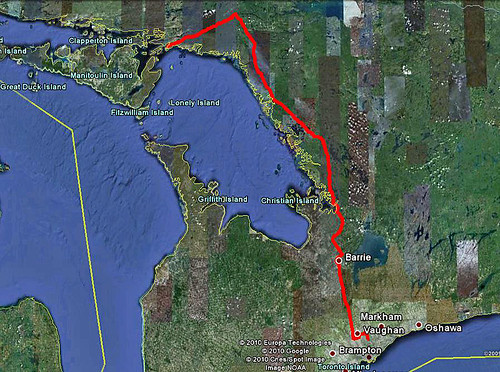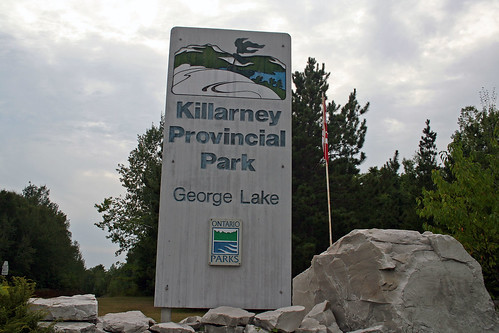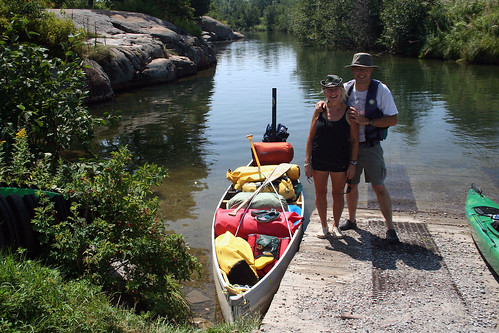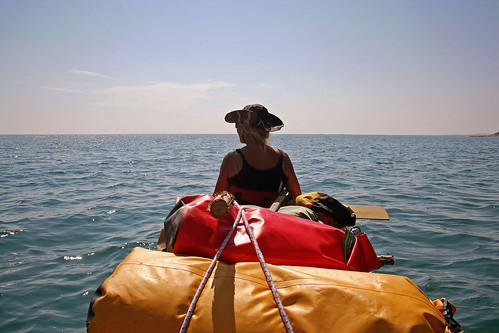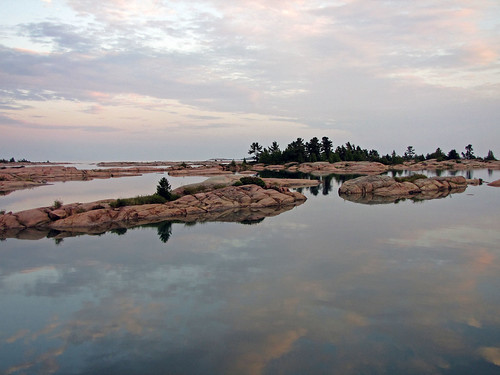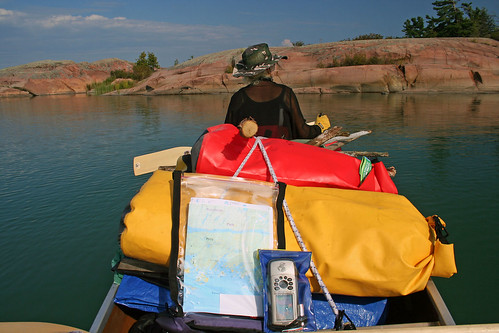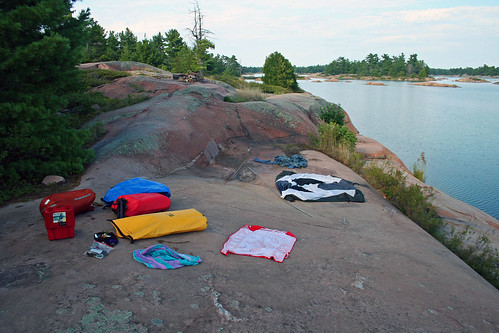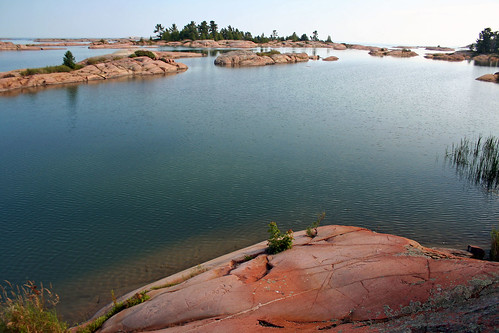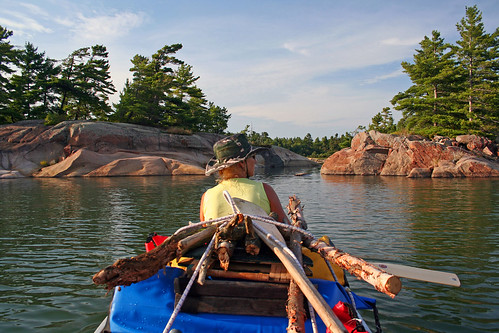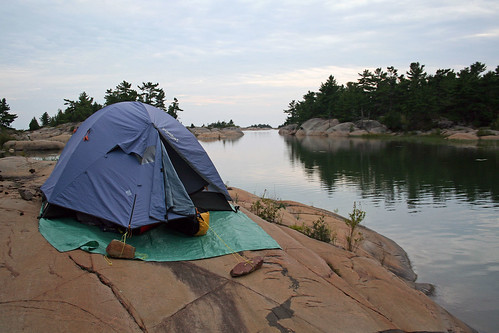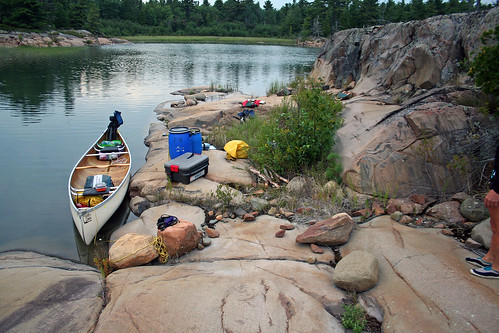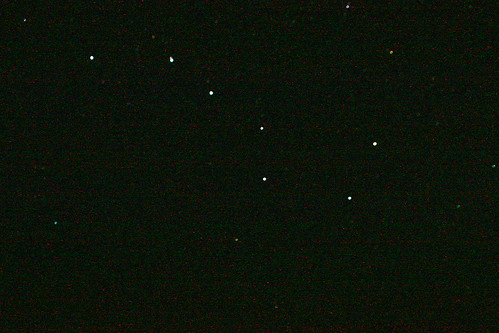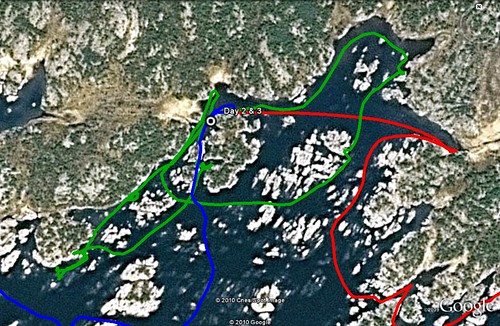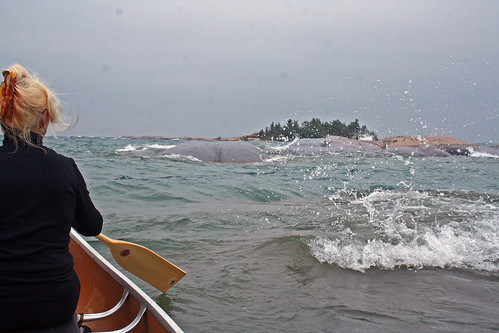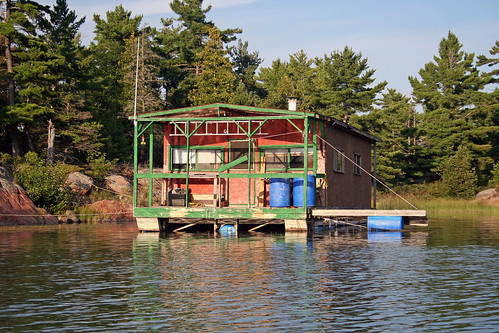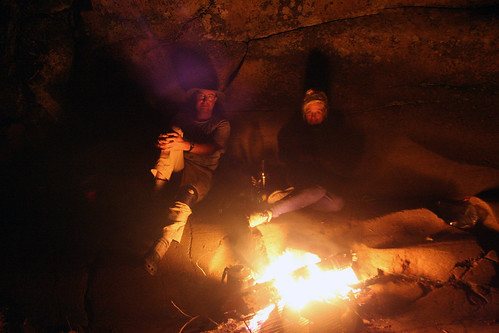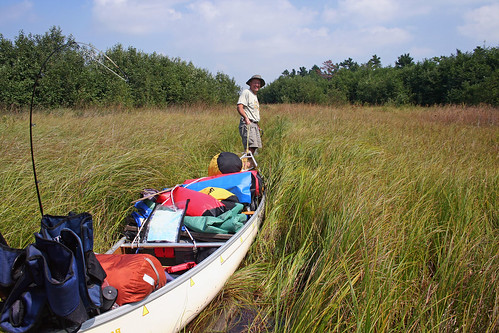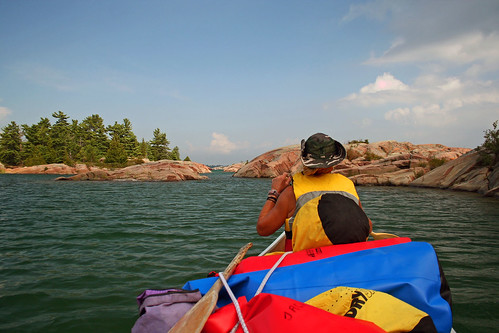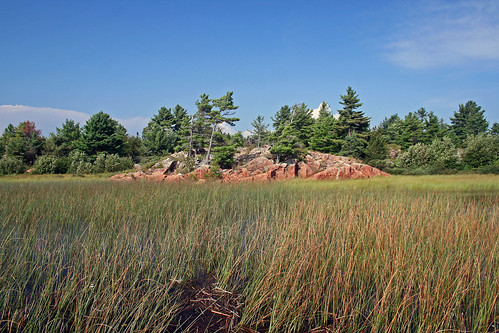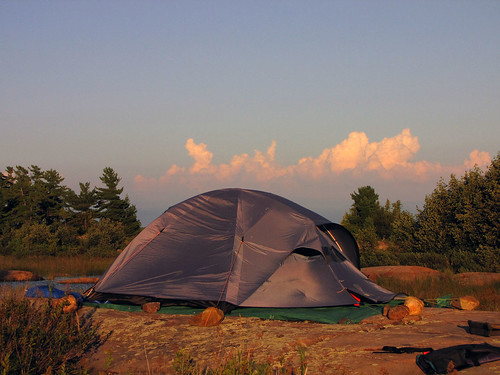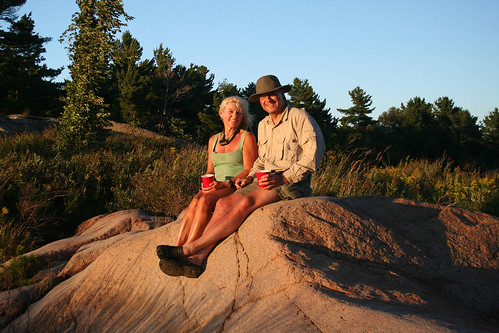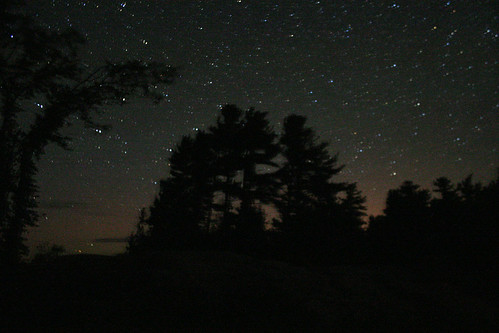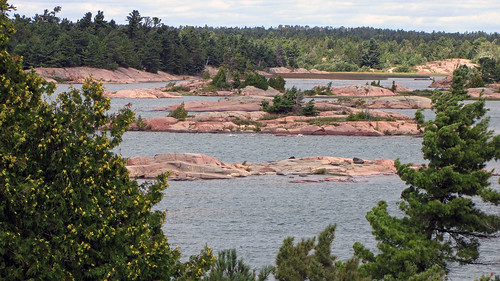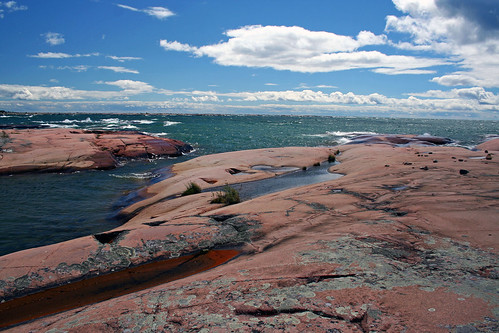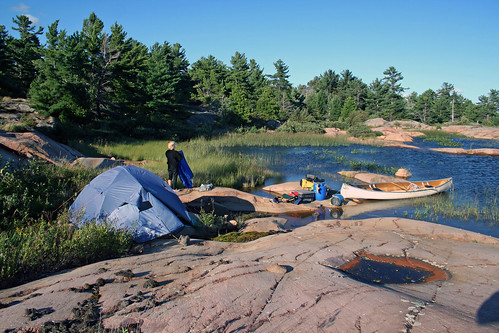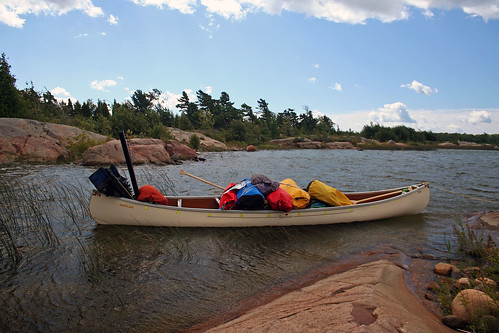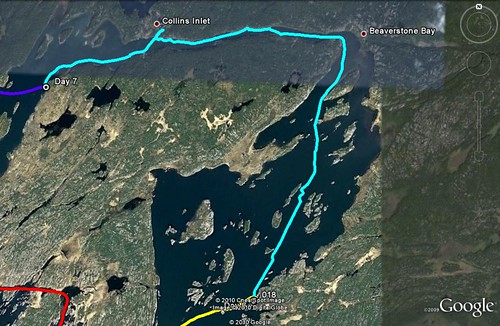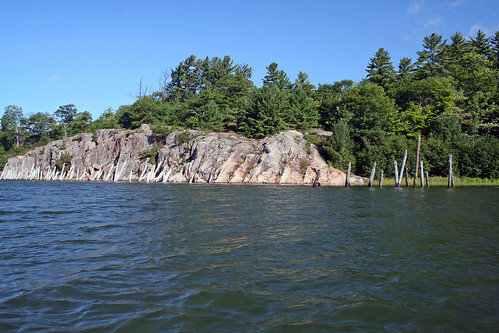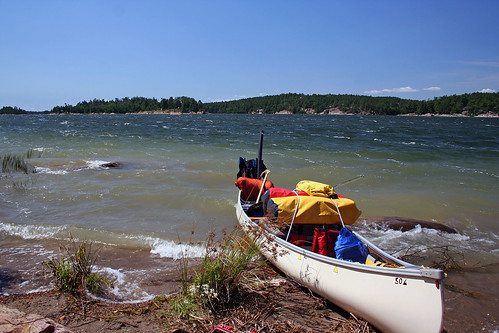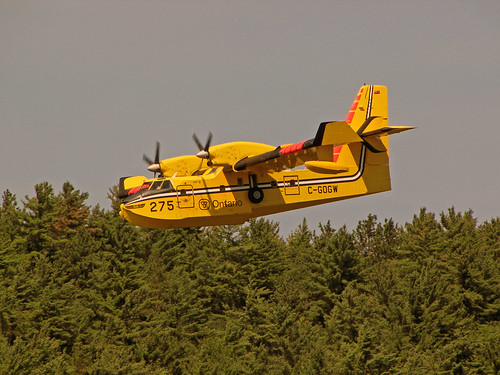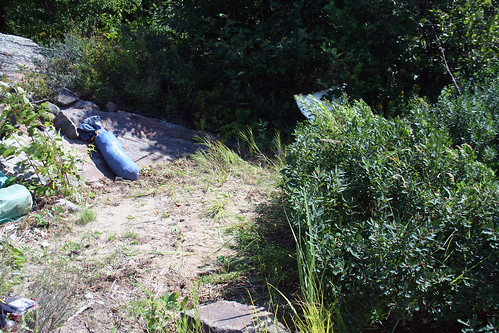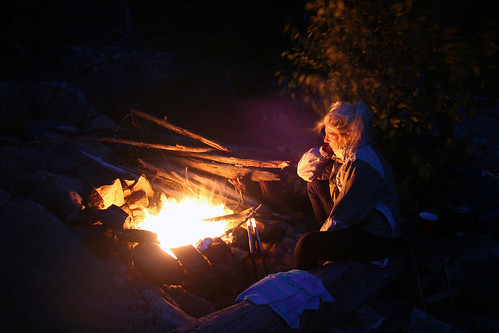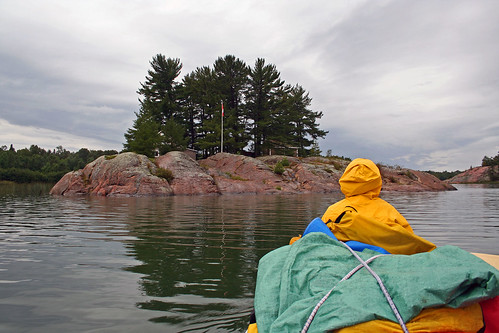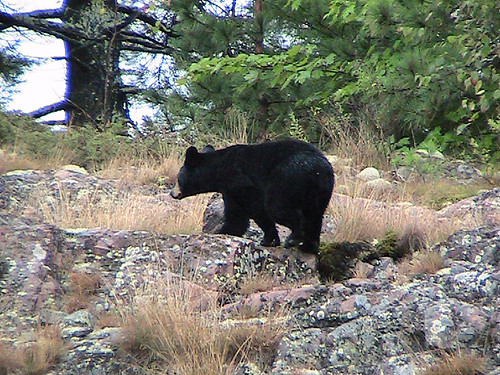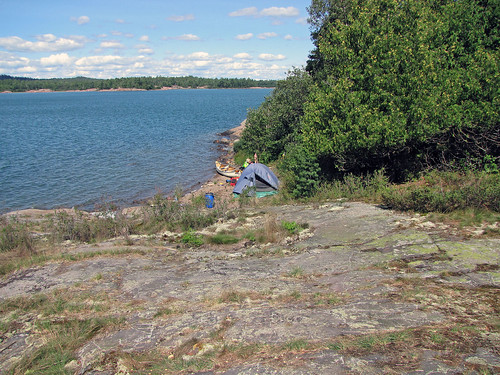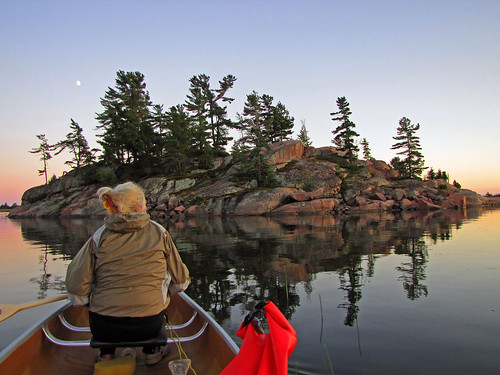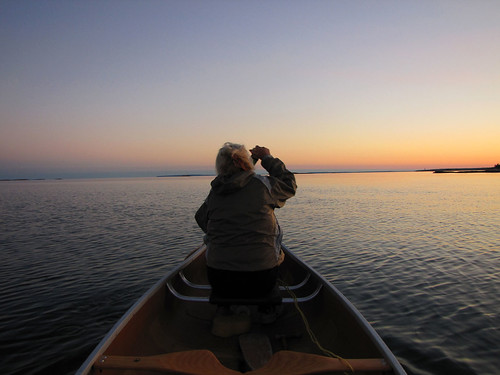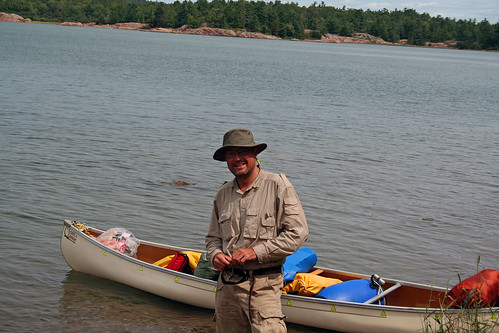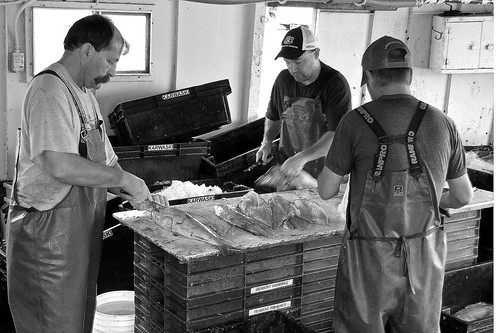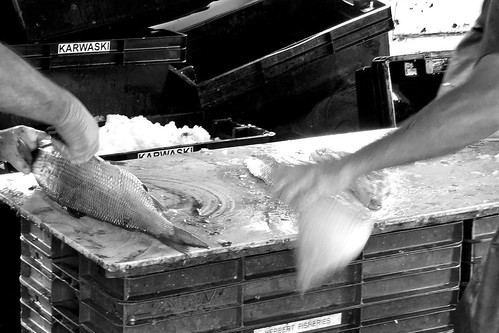More photos: http://www.flickr.com/photos/jack_1962/sets/72157626922815626
Our third trip to Cuba in less than two years (we went to Havana in January 2009 and to Trinidad de Cuba in January, 2010) began on October 31, 2010 at the Pearson Airport in Toronto . It was windy and snowy outside and we were in an upbeat mood knowing that soon this kind of weather would become, albeit for only one week, a distant memory! Besides, just before we were about to pay for the vacation through www.tripcentral.ca , the price dropped by about $100 and we ended up paying $402 per person, everything included—what an amazing deal!
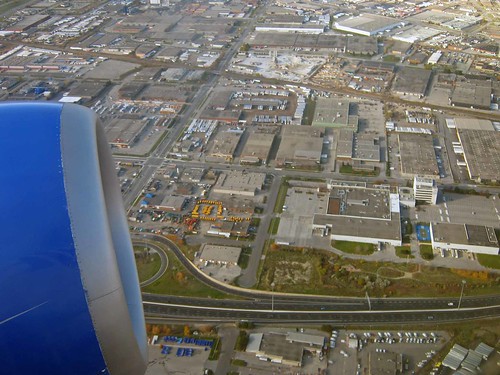
Our CanJet flight departed on time and four hours later we landed in Santiago de Cuba 's Antonio Maceo airport. It was hot and humid; as always, we went through the customs without any problems—didn't have to open luggage, nobody asked any questions. A lot of tax drivers immediately beset us, offering a ride. A small bus from the hotel was already waiting for us in front of the airport. One guy approached us, smiled broadly, shook our hands as if he had known us for ages, took our luggage and before we could even say a word, put it inside the bus; later, he came up to us with a piece of paper saying, “Tip, please”. Well... it's Cuba ! At least they don’t just stand there at traffic lights holding a cardboard sign and begging for money, like in some much wealthier countries I know :). There were about 10 of us on the bus. It was already dark, yet we could still see a lot of people along the roads, apparently waiting for buses or a ride; in Cuba hitchhiking is a way of life and government vehicle are obliged to pick up people if they can—tourist buses are exempt from such rules, although from time to time drivers do give rides to their acquaintances. The ride was OK and we made it to the hotel, the Carisol, at about 9:00 pm. We were greeted with exotic drinks and quickly checked in (the reception staff usually know English, unlike most of the other resort employees). One fellow, Julio, carried our bags to room # 502.
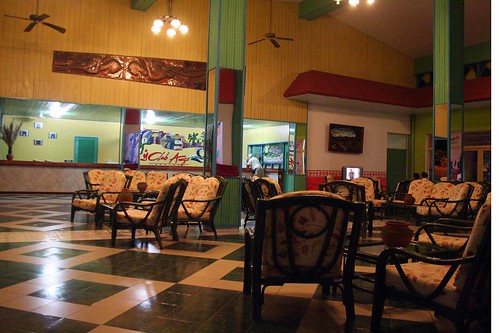
Catherine quickly discovered that the carry on bag he had delivered was not hers. After a few moments of panic she hurried off to the lobby and got things sorted out. The room reeked of dampness, it had an air conditioner, two beds, safe, TV set, fridge and telephone; since it was located at the ground level, we could sit in front of our room. The dinner was still being served, so we quickly walked back to the dining room. The food was a little dry, but overall I liked it—after all, I did not go to Cuba for its cuisine! After dinner/supper we walked to the beach; we were approached by a hotel security guard who started asking us if we had any gifts for him, like t-shirts... we pretended we didn't understand him, saying no hablamos espaniol, and quickly walked towards the beach. There were plenty of seemingly empty buildings (bungalows), probably being renovated (and such renovations may go on for years). The beach was wide, full of beach chairs, lit by lamps. Nobody else was around except for a stray dog that faithfully followed us. Eventually we got into the other hotel complex, the Corales, several hundred meters from the Carisol. It was empty—during low season usually only one hotel is open while the other one is undergoing renovations. It was a very eerie feeling—we were walking among empty bungalows, then came up to a swimming pool and entertainment area... everything was ready for tourists, yet it was so deserted! I decided to rest on one of the lounge chairs while Catherine, as always very adventurous, went exploring the other parts of the resort.
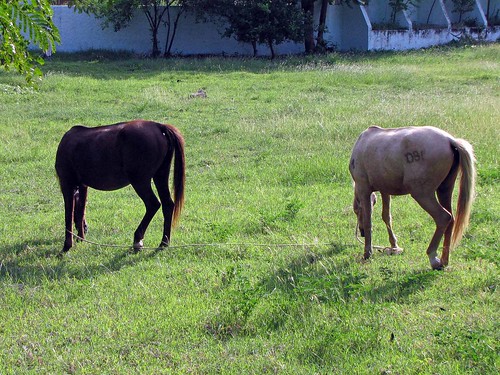
After about 20 minutes she called me to show me something: while walking along a grassy field next to the hotel, she saw something that looked like a monument of a horse head—only after a while, when this 'monument' moved, she realized it was indeed a horse! Yes, there were wild horses around the hotel and we saw them in the coming day. The horse was lying on the ground and when I approached it to take photos, it got up and trod away. Next to the grassy area there was a wall and two empty, dilapidated buildings. We saw silhouettes of two more horses wandering near those buildings. We found a path and went back to our hotel's lobby bar, but it was closing, so we had to go to another bar to have a drink. There were a bunch of tourists at the bar and we struck up a conversation with a German tourist who had been staying in the hotel for a week. He told us about his eventful trip from Europe to Cuba —because somebody on board had a heart attack, the plane dumped the fuel, turned back and landed in Paris . We chatted with him a little and then went to our room and soon fell asleep, as it had been a long day.
November 01, 2010, Monday
We must have been really tired, as we slept for a long time—we missed the breakfast and the orientation taking place in the morning. There was plenty of warm water (sometimes tourist complain about the lack of hot water), so we took a shower and were ready to start our first day of Cuban adventures. After a surprisingly tasty lunch, I set up the safe number and put some of our valuables inside it. We wandered around the resort, went to the beach and soon it was the dinner time again! I spent some time chatting with the receptionist about the latest news—that the Cuban government was going to lay off about 10% of all government employees and encourage them to set up businesses. Since almost everyone is employed by the government in Cuba , it means a lot of unemployed people!
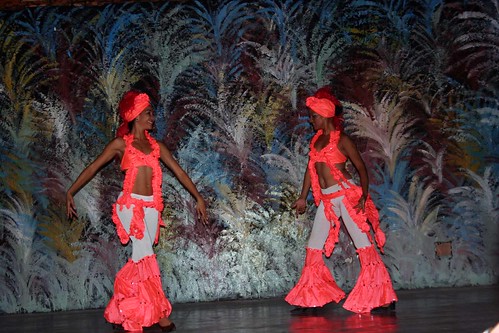
Of course, setting up a business is a major undertaking: apart from the bureaucratic government regulations, it's very difficult, if not impossible, to legally acquire any supplies or inventory to run a business since the state controls everything. Thus, if the government is indeed serious about supporting private enterprise, radical changes must be implemented. Prior to heading to our room we briefly watched the entertainment, but left in mid-performance as it was not too good.
November 02, 2010, Tuesday
Before breakfast, we left some gifts to the maid—well, tips are very much appreciated. It's always a very good idea to leave a peso or a small gift every day; in return, you are assured to have a perfectly clean room, with very original arrangements made of towels and flower petals. After breakfast, we went to the beach. There were a couple of kayaks, free for the guests. The staff gave us life jackets, paddles and we were on the water. About 50 m from the beach there was a rocky reef, being constantly battered by the waves, as it was a little windy.
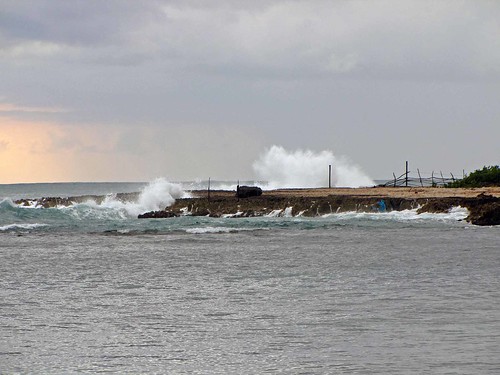
The waves were quite high—probably that was why we decided to head in that direction. Indeed, it was terrific to struggle with those waves—and at one point my kayak got overturned and I found myself in the water! It was shallow and I was wearing the life jacket, yet I had to be very careful not to be tossed against the sharp reefs. I managed to get back into the kayak, but in no time it capsized again; this time I lost my new clip-on sun glasses. Soon, I decided I had had enough and went ashore, while Catherine continued paddling, albeit close to the shore, thus avoiding the reef and the waves. While on the beach, I met two hotel employees responsible for the beach maintenance, Omar and Miguel.
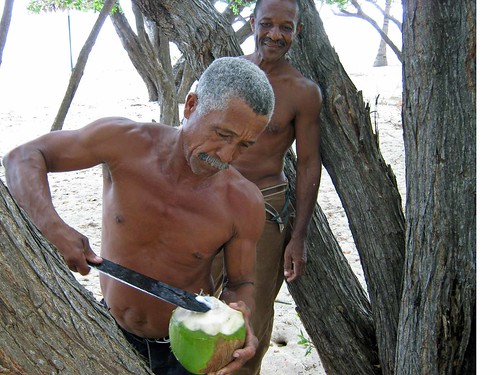
I believe they said they were both born in 1957, on the very same day, and had been friends since they were kids. Miguel gave us a couple of coconuts—he had a special long stick to get them off the tree, then masterfully peeled them with his machete and cut off the top part, allowing us to savor the coconut water and eat its tasty pulp.
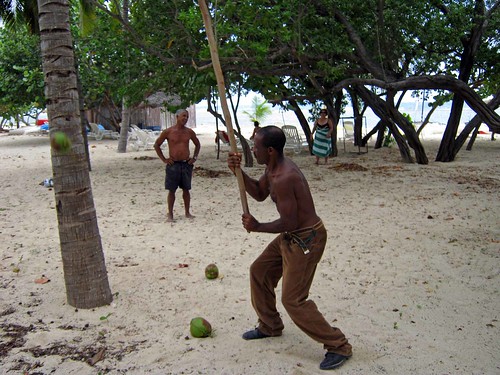
Omar said that a friend of his could take us on Saturday to the nearby village of Baconao. They were very friendly and nice guys! Later we went snorkeling—I took my disposable, waterproof camera to take underwater photos, but I was a little disappointed because I did not see much and took just three photos. We stayed on the beach till the sunset, then went to the room, had a few drinks (in order to avoid the trips to the bars, we had bought a bottle of rum and a bottle of coke in the hotel tienda, the shop) and went to the dining area for supper. A five or six person orchestra was playing various Cuban hits; I gave them 2 pesos and asked them to play “La Guarntarema”.

So far everything was great, the weather very good, sunny, humid and about +28C during the day. Since we were planning to go to Santiago de Cuba the next day, we talked to the receptionist—and I was so glad we did: First of all, we learned that while we were gone, this part of the resort (the Carisol, where we were staying) was closing and all the tourists were going to be transferred several hundreds of meters to the Corales, the ghost hotel we had encountered our first night.

Thus, we left certain instructions for the staff so that they could take our suitcases while we were gone—we wrote the note in Spanish, using our basic knowledge of this language and using the dictionary; the hotel employee was smiling a little while reading it, but the most important thing was that he understood it! Secondly, we found out that the crew bus (i.e., the bus that took hotel workers to and from Santiago de Cuba ) was leaving about 6:00 am, so we had to wake up early in the morning. After arriving at our hotel room, we packed all the stuff we were taking to Santiago to my backpack and then put all the remaining belongings to the suitcases, ready to be taken to the Los Corales by the hotel staff.
November 03, 2010, Wednesday
Of course, we were up very early; I thought it would take us just under 30 minutes to be ready... but suddenly I could not find my passport which, I could swear, I had put next to the TV set the previous night. I was looking for it everywhere; in fact, I unpacked my backpack, I unpacked my suitcase—to no avail! I thought I was going crazy—unless somebody broke into our room while we were sleeping, I could not provide a reasonable explanation for the missing passport. Finally, I started looking for it in Catherine's already packed suitcase... and lo and behold, I found it there! Well, somebody was very, very embarrassed...

We ran to the hotel lobby, but were told the bus would be late. Indeed, we waited for an additional hour for it to arrive. There were a few tourists like us, going to Santiago. We paid 5 pesos per person to the driver and soon were on the way. The ride on the old, spartan and squeaking bus was nice, finally we were able to admire the surrounding area (because we arrived at the hotel at night, we had hardly seen anything). We saw a lot of local people along the road, waiting for buses or any other transportation. Occasionally passed by local buses, full of people—but more often such 'buses' consisted of trucks equipped with a ladder—passengers were standing up, squeezed like sardines.
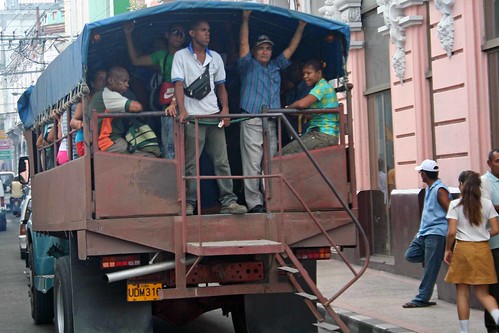
Finally, we entered Santiago. We were riding along a street with beautiful, stately mansions and some consular offices. At one point I saw a very interesting office building—with a barn-like structure on the very top—to this day I don't know what it was. We passed Plaza de la Revolucion, drove on Cespedes Avenue , passed a lot of casas particulares with the distinct blue anchor sign on the door (private houses, offering lodging options and sanctioned by the government). A lot of times we saw posters or names “26 de Julio”—since the Moncada Barracks Attack, the seminal event that gave rise to the July 26 Movement and precipitated the Revolution, occurred here in Santiago on July 26, 1956, no wonder that this city proudly displayed this significant date everywhere.
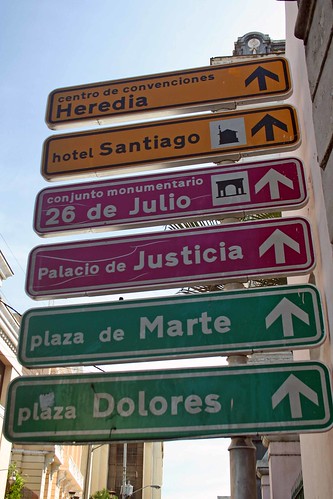
We passed a busy gas station and the even busier Bus Terminal and eventually got off the bus, along with a couple from the hotel, a Canadian woman and her Cuban boyfriend. We walked with them to Plaza de Marte, Plaza de Dolores and then to the heart of the city, Parque Cespedes. The parque was surrounded by very old, colonial buildings—Catedral de la Asuncion, Casa de Diego Velazques (built in 1516-30, the residence of the Spanish conquistador & Cuban governor Diego Velazquez, it's thought to be the oldest building in Cuba—presently housing the Museo de Ambiente Historico Cubana), Hotel Casa Granda (in Graham Green's “Our Man in Havana”, the author describes it as a hotel frequented by spies) and the Ayutamiento, the town hall—from this building's central balcony Fidel Castro made his first speech to the Cuban people on January 1, 1959, announcing the victory of the Cuban Revolution.
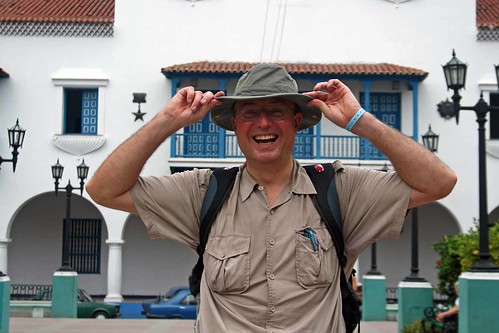
We sat on one of the benches and rested for a while; after all, we carried a backpack full of personal belongings and various gifts, as we were planning to spend two nights in this city. The first impression was that it was a very vibrant, exuberant and full of life city. A lot of people were offering us taxi rides, casas particulares or just asking for money or gifts. The traffic was brutal and I admired the brave people trying to cross the street—they had to maneuver among moving cars, trucks or motorcycles; I personally witnessed a few passers-by slightly jostled by motor vehicles—and the 'official' crosswalk made no difference to drivers!
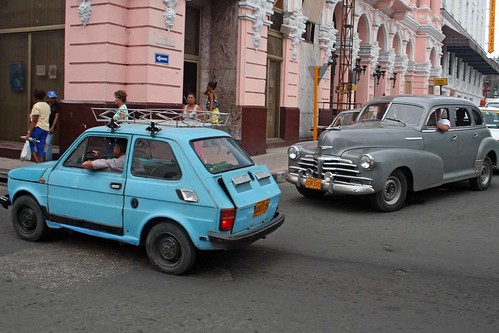
What a far cry from Canada , where it's almost enough to stand at the crosswalk, or better yet, extend an arm, in order to bring all the traffic to full stop! I was really surprised that I didn't see any accidents—the streets were very narrow and one-way, often with very limited visibility and barely discernible traffic signs. Many cars or trucks were just speeding, trusting that no other vehicles or pedestrians would suddenly show up in the middle of the road.
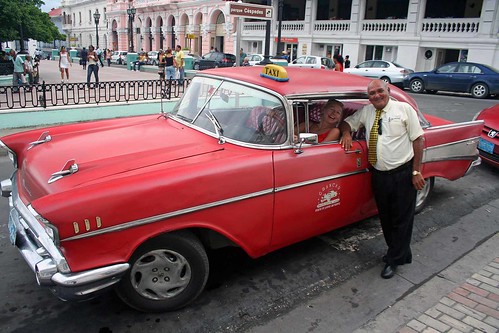
There was a row of taxi cabs in front of the cathedrals, several of them at least as old as the Cuban Revolution and we decided to hire one of them, a 1958 Ford, asking the driver to take us to Casa Maruchi [Calle Hartmann (San Félix) 357, Santiago de Cuba, Email: maruchi@infomeil.com], located several blocks away—we had read many very positive reviews about this casa and were looking forward to spending a night there! Having paid 3 pesos for the taxi ride, we met the casa's owner; unfortunately, the casa was full (as per the government regulations, only 2 rooms can be rented in any casa; since violation of this policy could result in the revocation of the casa license, legitimate casas' owner aren't usually willing to break this rule). Yet the owner took us to another casa, a hundred or so meters away on the same street. It turned out that this casa, run & owned by an English speaking physician, was excellent! [Armando Carballo Fernandez, San Felix (Hartmann) No. 306 e/ Habana (Jose Miguel Gomez) y Trinidad (General Portundo), Santiago de Cuba, telefonos 653144 y 62496 , Movil 0152466161].
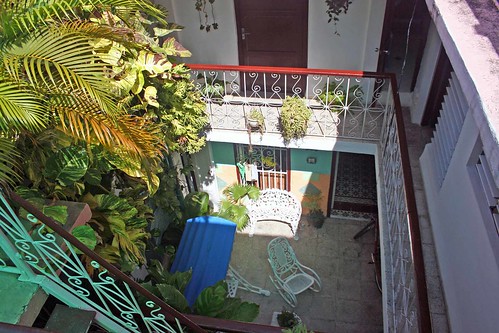
We had our own, cozy room with a bathroom and could see the street life from our windows. The building's narrow hallways and stairs led to two roof-top terraces, giving us an excellent view of the city—as well as letting us have our drinks there. I quickly took a look at his library—most of the books were in Spanish, yet I could quickly recognize familiar titles or authors (“Quo Vadis?” by Henryk Sienkiewicz)—as well as I found a few travel guides on Cuba in various languages, including one in Polish. The room was available for only one night, so we were hoping to move to the Casa Maruchi for the following night. Since we were tired, we took an hour-long power nap and were up at 1:00 pm when we ordered a dinner (to be served later) and went for a walk.
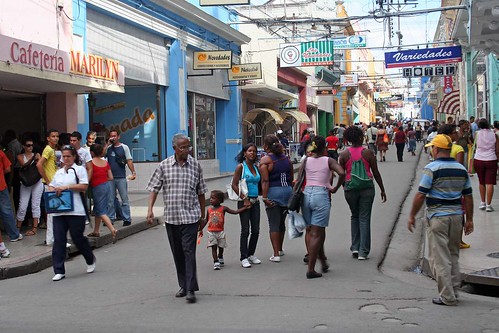
The smell of sewers and motor vehicle fuel permeated the air; the city was noisy, with many markets offering plenty of goods for the 'real' currency, i.e., the CUC, the convertible peso. We saw plenty of casas and private restaurants or cafes. Streets were full of people, some asked us for money or tried to sell us cigars (‘no fumaros’), others just wanted to talk. Several streets had old streetcar tracks, the remnants of the different era.
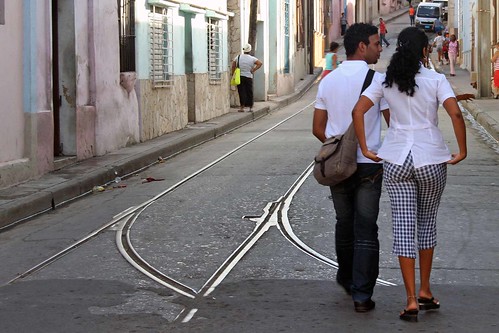
Apparently, the tram service was inaugurated in 1908 and closed in 1952. There is a very interesting webpage on the Tramways of Cuba: http://www.tramz.com/cu/sc/sc.html . I wish I could see the streetcars turning in those very narrow streets, I cannot imagine how it was possible—probably they must have been touching the corners of the buildings! In comparison to what I saw in Havana almost 2 years ago, this city was certainly much more ebullient.
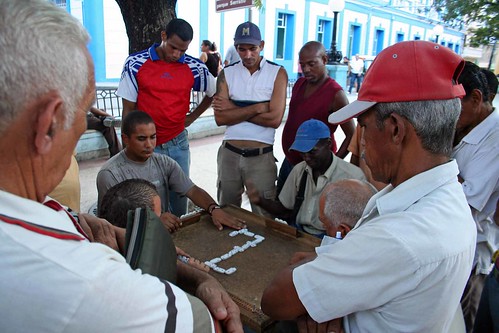
The jineteros, or the hustlers, were much more common and bothersome than those in Havana; upon seeing my backpack, they (rightly) assumed we were looking for a casa particular and were literally following us, even though we made it very clear to them we did not need their 'help'. One such jinetero at Parque Cespedes was obviously a permanent inhabitant of that area, working there every day—we ran into him several times; incidentally, his appearance was so unsavory that I'd be afraid to ever conduct any business with him.
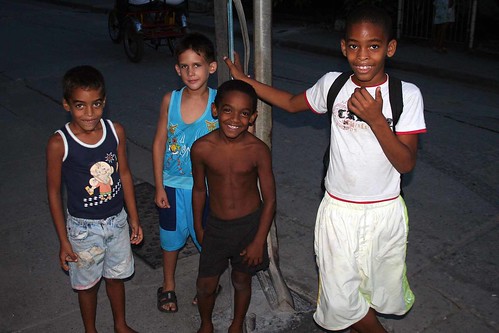
Needles to say, I was taking plenty of photos, yet my Canon Rebel XT kept malfunctioning all the time; luckily, I had two other cameras with me. A couple of times I bought canned beer “Bucanero” for one peso to satiate my thirst. We walked back to our casa and spoke to the owner for a while. He was a general practitioner and had a young son, who had a rather serious problem with his leg and wore a sort of prosthesis device. He advised us to be a little careful when walking in the streets especially at night, as some people might snatch our cameras.

We went upstairs and on the roof top terrace had our delicious dinner, served by the owner's wife.
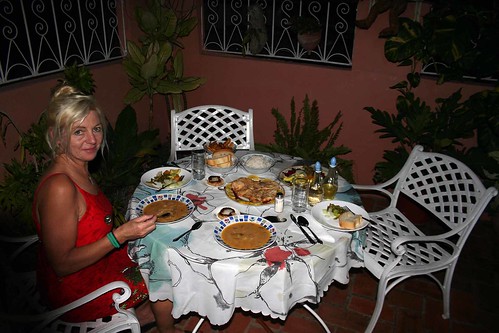
Later, when it was getting dark, we walked around the neighborhood, where I took plenty of photographs, especially of kids, and gave them a lot of gifts: we brought with us several kilograms of such items as soap, pens, crayons, note pads, stickers, calculators, key chains, manicure kits, etc.

Regrettably, it's a poor country and those who do not have access to the 'hard currency' (i.e., those not working in the tourist sector or not having relatives abroad) must do with what they can buy with the Moneda National, the official Cuban currency, which is not worth a lot... In fact, it's ironic that a waiter can make more money in half a day in tips than a surgeon in a month.
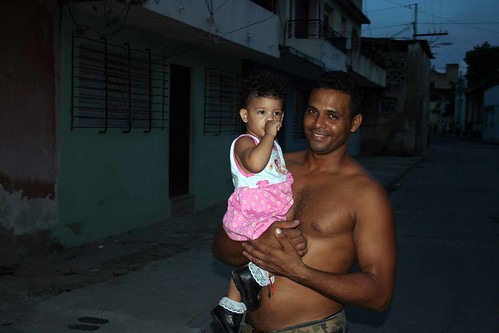
Through the open windows in our room we could hear the cacophony of noises coming from the street—people shouting, cars blowing their horns, their old and noisy engines, kids calling one another... The smell of sewers and gasoline was ubiquitous and I will always associate it with this city. Since we were very tired, it took us just a few minutes to fall asleep.
November 04, 2010, Thursday
In the morning we took a shower, packed up our belongings and paid the casa owner: the casa cost 25 CUC per night for the two of us, the two dinners 20 pesos and about 10 pesos for all the beer and water we consumed. We gave them tips as well as some gifts—and took a short jaunt to the Casa Maruchi, hoping that we could spend the second night there.
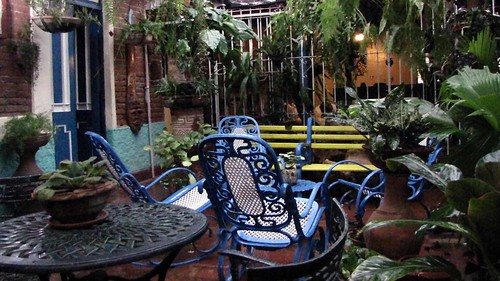
However, it turned out that hurricane Tomas was just about to hit Haiti and the area of Santiago de Cuba , some flights were canceled and the tourists staying in the casa could not leave and had to stay an extra day. Indeed, the weather got a little worse. We left our backpacks in Casa Maruchi and walked to Parque Cespedes, took a lot of photos and met a black guy who had lost his arm in a motorcycle accident (or at least it was what he said). We took him to a restaurant/cafe located at one of the corner buildings near Parque Cespedes and bought him a Mojito; he appeared to just want to talk with us.
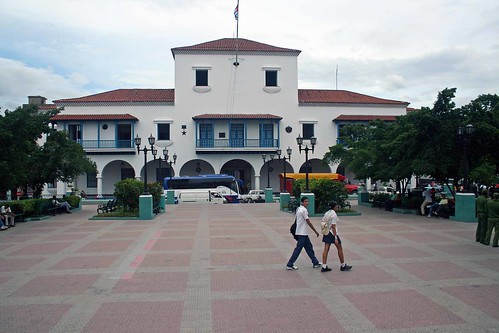
While Catherine enjoyed chatting with him, I went to the adjacent building across the street, the City Hall with the famous balcony where Fidel Castro had made his historic speech. I asked if it was possible to get onto the balcony, but even the incentive in the form of a 5 peso tip didn't open the door, so to say. We bought several postcards in a store located at the bottom of the cathedral, near the tax stand. One nice midget lady very insistently begged us for money; eventually I gave in, but took a few photos of her in return.

Then we went to the Hotel Casa Granda, where we had some beer on its terrace overlooking Parque Cespedes, where we could enjoy watching the city life below. Before we left for Cuba, Catherine had purchased a big bag containing individually wrapped chewing gums, sold for the Halloween—it was an excellent idea, she was giving it away and everyone loved the gum—she was even throwing it from the hotel terrace to some people who were asking us for candies. I wrote several postcards to Canada and Europe and mailed them from the hotel, but only about half of them ever arrived to their intended recipients. The Museo de Ambiente Historico Cubano was our next destination—it had plenty of very old and interesting furniture from various colonial periods—as well as we could admire the Casa de Diego Velazquez and its Moorish style.

On our way back to Casa Maruchi we stopped at the very well-known Casa de la Trova, famous for its music performances, but they only started at 8:00 pm.

Once at the casa, we spent there an hour or so sitting on the roof top terrace talking to the casa owner's husband and admiring the city. The weather was changing—the hurricane must have moved over Santiago; black clouds formed, it started raining and we moved down to the 'living room', which was full of green plants, had an impressive sculpture/fountain and even a live turtle!
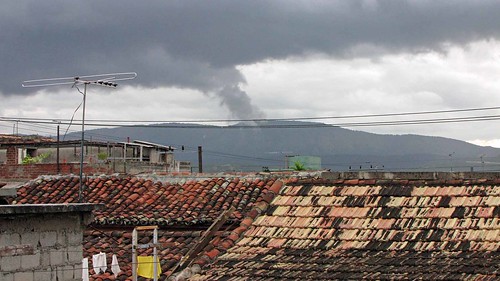
The owner (Ms. Maruchi) called the cab for us, the same Ford in which we had arrived the day before. She also asked if one of her Cuban guests could, ummm, "share" the cab with us. It was an old, classic American car, the 1958 Ford. Perhaps it was a little slow; the engine stalled twice in the middle of nowhere as we drove through the torrents of rain and flooded highway, but the driver managed to get it working and delivered us safely to the hotel in less than 2 hours.

He also increased the price but we decided it was worth it. Little did we know at that time, but as a precaution, the airport in Santiago de Cuba was shutting down due to the hurricane and the last plane to depart before the shutdown was a Cuban flight from Haiti, via Santiago, to Havana (Aero Caribbean Flight 883): tragically, it crashed en route to Havana, killing everyone on board (61 passengers and 7 crew). We went to the Corales resort—the Carisol was now temporarily closed. At the reception we found out that our luggage had been taken to the Corales and now we were in room number 516.

We took a shower and went for supper. It was raining and windy, the hurricane passed over Haiti and we only experienced its peripheral limits. After supper we went to our room—it was nicer than the other one and the smell was gone, as well as we could see the entertainment from our balcony. We watched the news and found out about the plane crash in Cuba as well as there was another potential plane crash, this time with the Quantas, Australian Airlines, whose plane lost on of its engines.
November 05, 2010, Friday
Tired, we slept till 11 am, skipping breakfast and went straight to have lunch. A few words about the food: it was a buffet-style, all-you-can-eat and overall it was quite good; besides, we always enjoyed a few glasses of red wine or beer with our meals. I never had any problems with picking something delicious—especially enjoyed chicken, pork and omelets in the morning.

Not that the food in Havana (at the Tropicoco Hotel) and Trinidad de Cuba (Hotel Costasur) was bad, but it was certainly different and probably this resort offered the best food (some tourists always complain about food—Cuba is not known for great cuisine, but from my experience, it was always possible to have good and even tasty food—and I never experienced upset stomach or similar symptoms). Another positive thing was that the resort staff did not really ask for or seem to expect tips—we did not feel the pressure that we had to give them tips—nor did they offer us any unsolicited 'gifts', anticipating money in return, as was the case in the Costasur. We had a few musicians play Cuban music (one was a blind singer) and usually people were giving them a peso or two, but again, there was no feeling of compulsion to do so. Only once a magician, after showing us a few tricks, was going from table to table, demonstrating a box trick and then trying to sell the box for 5 pesos.

Later that day we walked along the road leading from the hotel to the village of Baconao and explored interesting caves and similar geological formations. While walking on the hotel beach, we met a security guard (with a .38 caliber pistol—which he said he had never had to use) who pointed to a few very crabs. It was raining, so we took shelter in an unused bar; having procured a bottle of rum and coke beforehand, we were able to enjoy a few drinks!
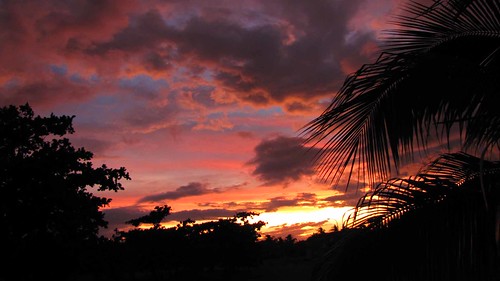
Once the rain was over, we walked on the beach again and I observed and took photographs of some kind of a lizard on the tree. After supper, we again walked around the beach, saw some crabs and then went around the abandoned buildings (they were very close to our hotel).

A security guard explained to us that there was a school for workers and they used to live in those buildings. While wandering around the hotel property, we spotted a few horses.
The entertainment was on tonight at about 9:30 pm, so we went back to the stage area and met the German tourist we had seen when we arrived to this resort. He was supposed to depart tonight, but due to the storm, his flight was canceled and he was enjoying his extended vacation.
Once the entertainment was over, we walked on the beach and around the abandoned buildings. There was one more thing we wanted to do—namely, visit the village of Baconao, which was located several kilometers from the hotel. Omar and Miguel, the 'beach guys', said that their cousin can drive us there, but when we were looking for them earlier today, we could not find them. So, we were planning to simply hire a horse-drawn buggy in the morning in front of the hotel. Coincidentally, while heading to our room, we encountered a guy who started talking to us and said that he could arrange such a carriage for us tomorrow morning for 3 pesos per person; we promised to show up in front of the hotel at 10:00 am, right after breakfast.
November 06, 2010, Saturday
There were a few buggies in front of the hotel and we immediately recognized the guy we had spoken with yesterday; the one-horse buggy was driven by another fellow who tried to sell us a watch on the beach a few days before.
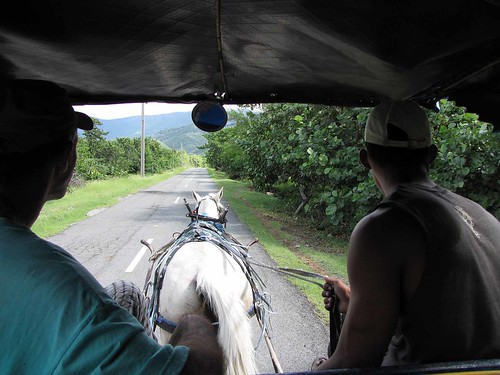
The ride was nice, we passed the caves we had visited the other days, two restaurants and about 45 minutes later reached the center of the village of Baconao. It was a rather poor village. There was a beauty parlor in that 'central square' which we visited. I took plenty of photographs of a mother with children as well as of workers and customers, rewarding them with some gifts (they wrote down their addresses and a few months later I mailed them the photos).
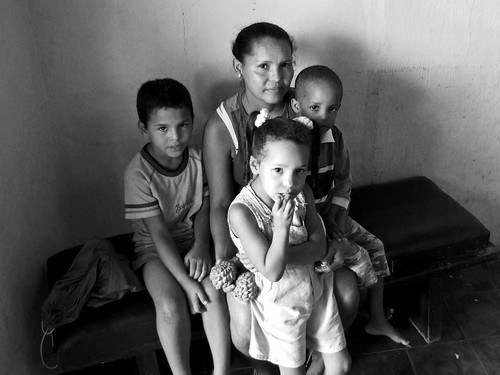
We also went to a nearby government store; it had some rudimentary supplies, cigarettes, and simple toys; apparently ration cards, in addition to pesos, were required to make purchases.
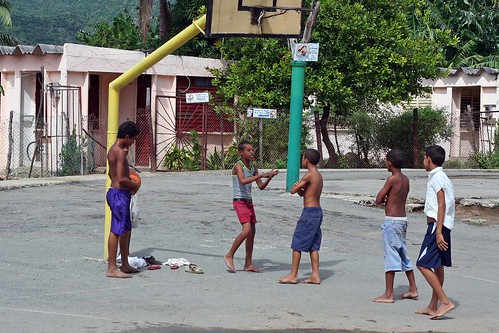
We wandered around the village and were invited by a family to their simple rural home. I took photos of them, they grabbed a few coconuts, split them open and gave them to us—we enjoyed the coconut water and its very filling pulp.
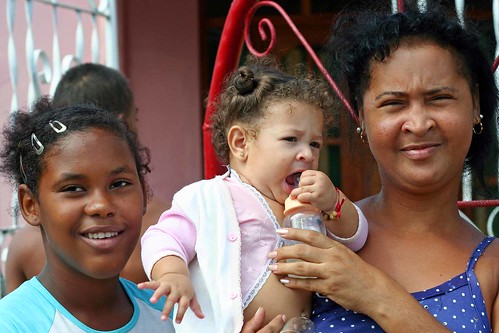
We left them gifts (later I mailed them the photos) and went on, exploring the village, meeting other people, taking photos. After reaching a road with a uniformed sentry, we had to turn back.
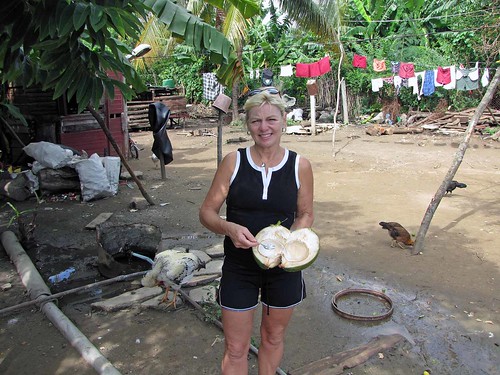
We were told the road led to Guantanamo where the American base was located (although it was about 40 km. away). In fact, it was supposedly possible to see from our hotel beach American ships going to the Guantanamo base; we did see some ships very far from the shore, but obviously could not determine their flag. Altogether we stayed in the village for over one hour and all this time the buggy was waiting for us.
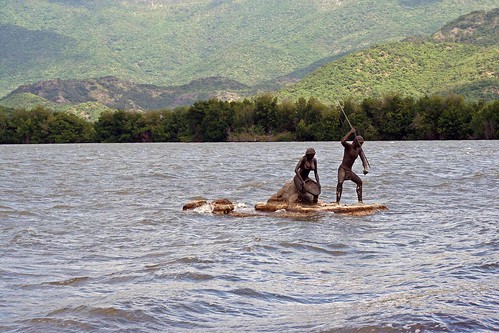
On our way back to the hotel we stopped at Laguna Baconao—a lake (?) which had an original bronze sculpture in the water of two Taino fishermen (the Taino people became extinct in the 16th century) and visited a crocodile farm nearby. There was a boat for tourists on the lake, but since it was very windy, we could not use it. At the restaurant we ordered beer (for us and the buggy drivers) and returned to the hotel, at which time we paid him and gave him and his friend some gifts.
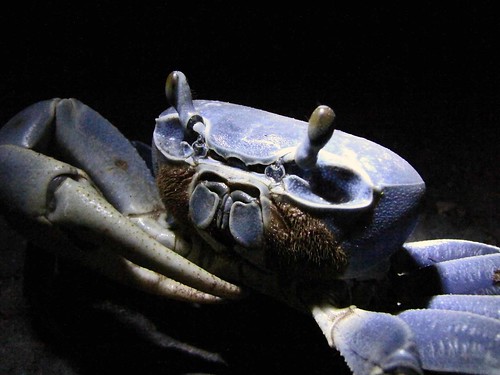
After supper we wandered around the hotel and on the beach, spotting a few colorful crabs; at that time my video camera developed a mechanical problem—funny, but it was my the third camera that failed in Cuba!
November 07, 2010, Sunday
We were up at 8:30 am, but decided to skip breakfast and go directly to the beach, to enjoy our last day in Cuba. Unlike yesterday, it was sunny and calm—the hurricane Tomas had passed, but not before doing some damage and leaving a number of fatalities in Haiti, already devastated by the recent earthquake (coincidentally, the earthquake occurred while we were in Trinidad de Cuba).
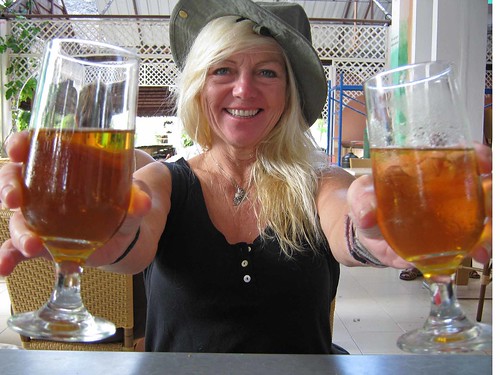
Two hours later we went back to our room, packed up quickly left the room—we were supposed to leave the room before the noon so that the cleaning staff could prepare it for arriving tourists. We left the luggage in the lobby and proceeded for dinner—as always, it was quite good and tasty, we had plenty of wine, talked to some tourists and then went for our last walk around the hotel. We passed a restaurant located outside the hotel and entered the abandoned building adjoining to the hotel.
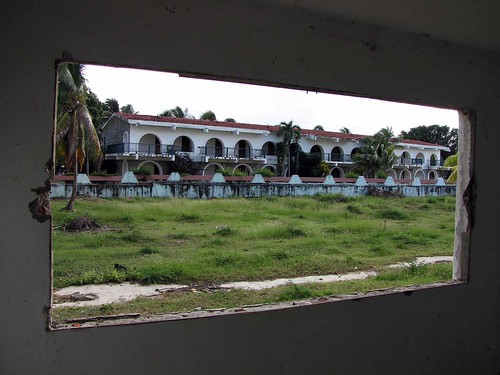
They were totally empty, nothing of value was left. I took a few photographs. We met the two guys who had taken us to Baconao the other day. There were some goats, cows and horses around the buildings; as we were walking back to the hotel, I spotted a woman with kids near the restaurant. I took plenty of photos of this group and gave them the remaining gifts.
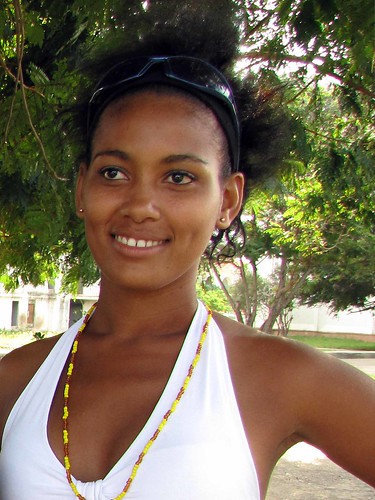
At that time a totally drunk guy, who could hardly walk, was trying to mount a horse with his friends' help; once he was in the saddle, he, or shall i say the horse, rode off—hopefully the horse knew the way!
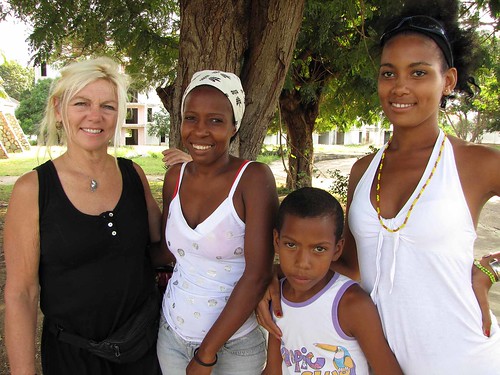
We ordered a few cappuccinos in the hotel lobby and got on the bus that was waiting for us to take us to the airport in Santiago de Cuba. The journey to the airport gave us an opportunity to admire the countryside and the surrounding Sierra Mountains. It was in those mountains that Fidel Castro and his men were hiding and fighting after the Moncada Barrack attack; I can only imagine how difficult it was for the Batista regime to fight them in such rugged terrain. In fact along the road we saw quite a few less or more elaborate monuments, presumably commemorating revolutionaries who were killed there or places where battles or skirmishes with the Batista army took place.
Once we got to the airport—the same airport from which that doomed flight had taken off for its final journey just three days earlier—we waited for the plane, talked a little to our fellow travelers and eventually saw our plane land, delivering a new group of tourists from Toronto. This time we flew to Cayo Largo, picking up tourists who had been on our plane from Toronto and then flew to Canada—this destination added at least two extra hours to our flight. Thus, the trip back home was quite long and tiring, but we eventually landed after 1:00 am in Toronto.
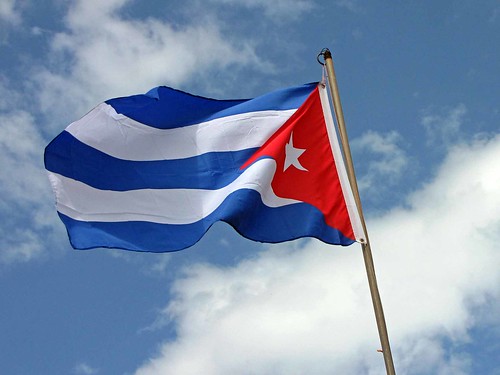
We genuinely liked our holiday—we visited two casas particulares and two hotels, the hotel atmosphere was very nice, we enjoyed plenty of time on the beach (not that I am particularly interested in the beach anyway), food was very good, staff very nice—I would certainly recommend the Los Carisol/Corales resort! Our excursions to Santiago de Cuba as well to the village of Baconao were certainly the highlight of our trip, as they added a lot of variety to the otherwise somewhat prosaic stay in the resort (unless one likes spending all the time on the beach and in/around the hotel). I look forward to visiting Cuba again; considering the recent relaxation of the government restrictions on small business and forthcoming plans to issue hundreds of thousand of permits to people so that they could carry out private business activity, I am sure that no matter what, Cuba will be changing—for the better.
Polish version of this blog/Wersja po polsku: http://ontario-nature-polish.blogspot.com/2010/12/in-polish-pywanie-na-kanu-w-massasauga.html
More photos: http://www.flickr.com/photos/jack_1962/sets/72157626922815626


